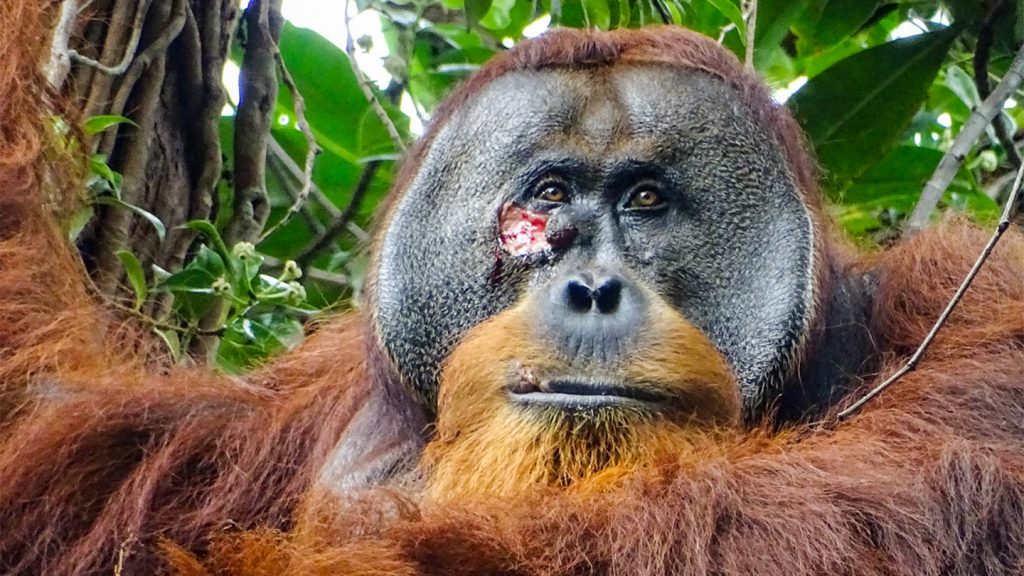Orangutans, known for their resemblance to humans, were observed by field biologist Ulil Azhari treating a wound using a natural substance with known medicinal properties. This is the first time a wild animal has been seen caring for a wound in this manner, using a plant called Akar Kuning. The orangutan, named Rakus, chewed up the plant and applied the paste to an open wound on his face, which eventually closed without infection. This behavior demonstrates intentionality and an understanding of self-medication in orangutans, highlighting their similarities to humans.
The Akar Kuning plant used by Rakus is well-known in traditional medicine for its antibacterial and anti-inflammatory properties. Isabelle Laumer, a cognitive biologist at the Max Planck Institute for Animal Behavior, found Rakus’ behavior fascinating and believes that such findings can help people appreciate the similarities between orangutans and humans. With all three species of orangutans facing critical endangerment, raising awareness about their intelligence and ability to self-medicate may contribute to conservation efforts and prevent their extinction.
Michael Huffman, a zoologist specializing in primate behavior, acknowledges the extensive literature on animals applying treatments to ailing areas but notes the significance of this specific case. The detailed documentation of the chemical properties of the plant and the treatment’s progress provides valuable insight into primate self-medication behavior. Understanding the ability of orangutans to utilize natural remedies may offer new perspectives on their intelligence and capacity for problem-solving.
The discovery of Rakus’ self-medication behavior sheds light on the complex cognitive abilities of orangutans and their resourcefulness in treating injuries. This finding not only enhances our understanding of animal behavior but also emphasizes the urgent need to protect these critically endangered species. By showcasing the similarities between humans and orangutans, researchers hope to galvanize efforts to safeguard these remarkable creatures and preserve their habitats for future generations.
Overall, the observation of Rakus using Akar Kuning to treat his wounds showcases the sophisticated cognitive abilities and problem-solving skills of orangutans. This behavior underscores the need to raise awareness about the plight of these endangered primates and the importance of conservation efforts to ensure their survival. By studying and highlighting such behaviors, researchers aim to promote greater understanding and appreciation for orangutans and inspire action to protect them from extinction.















